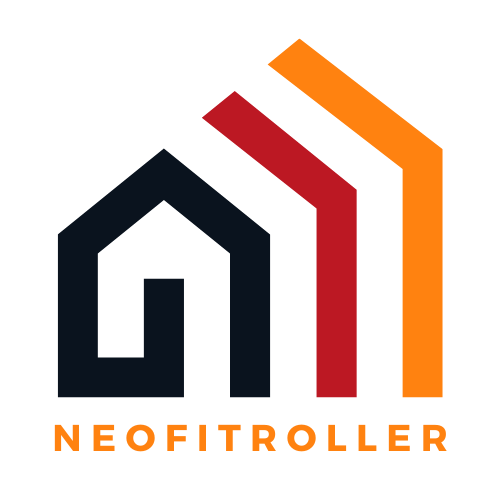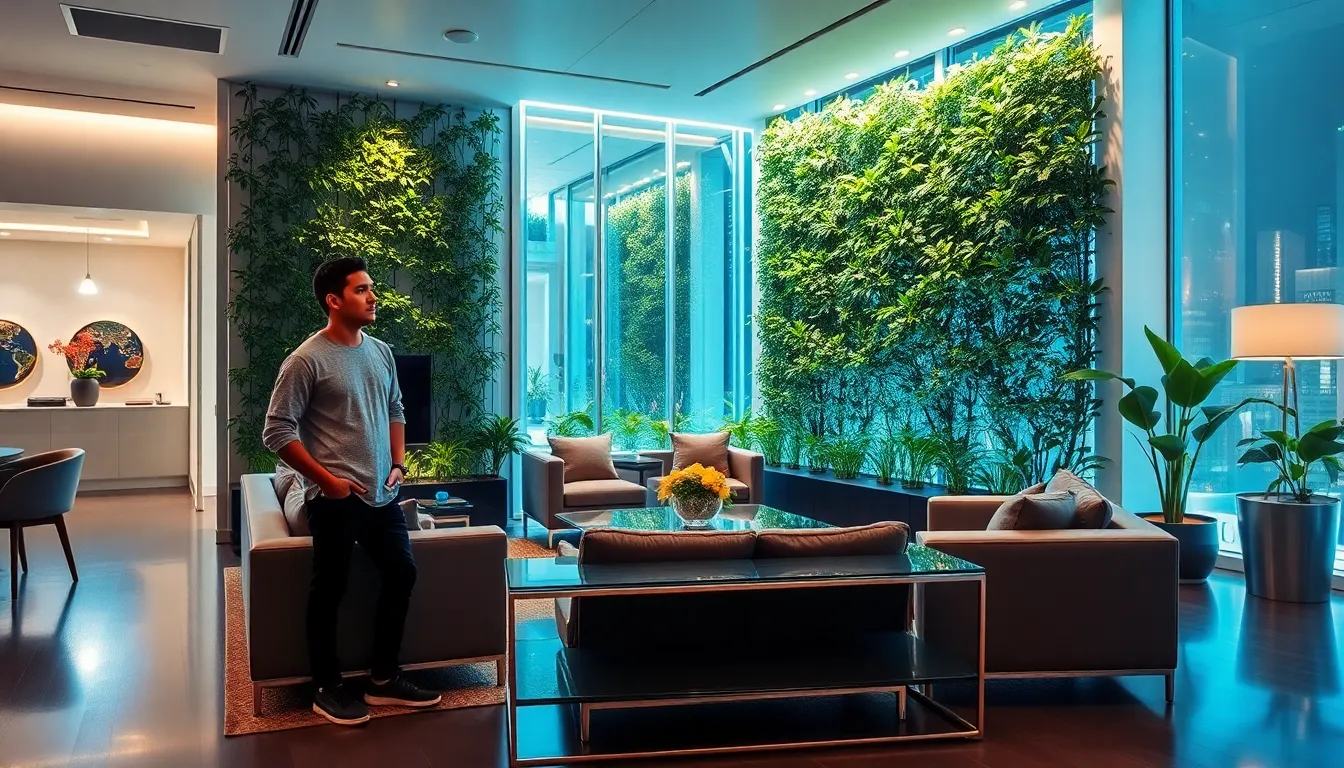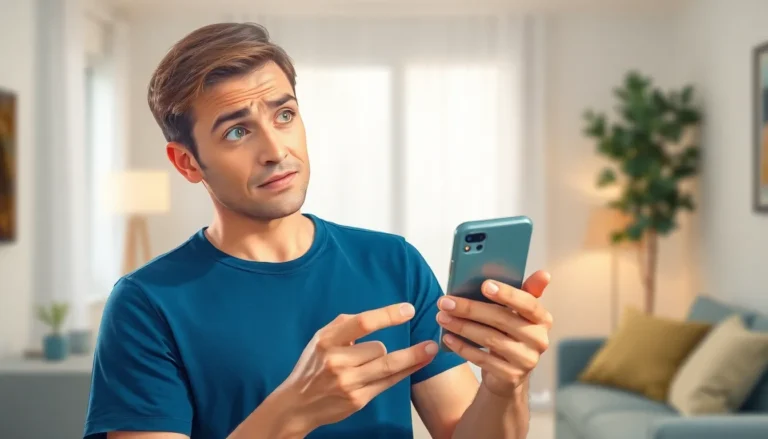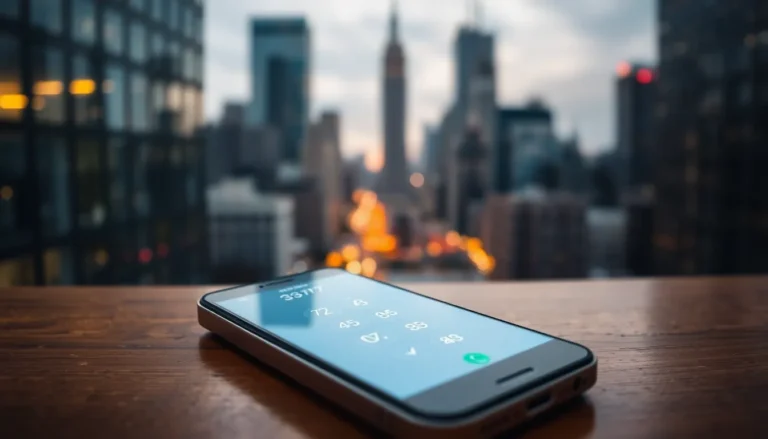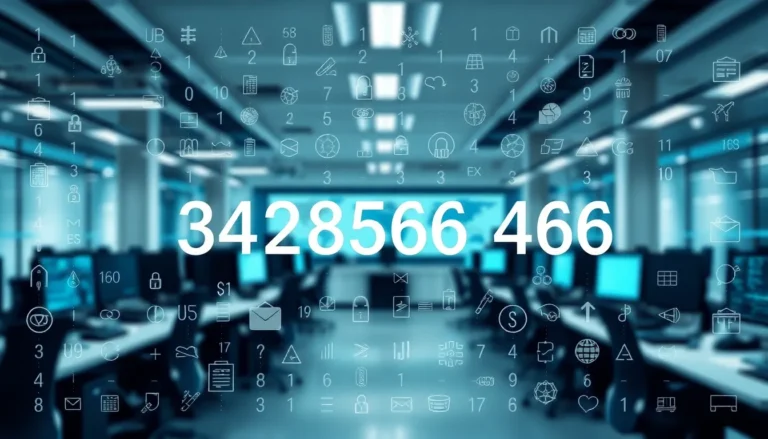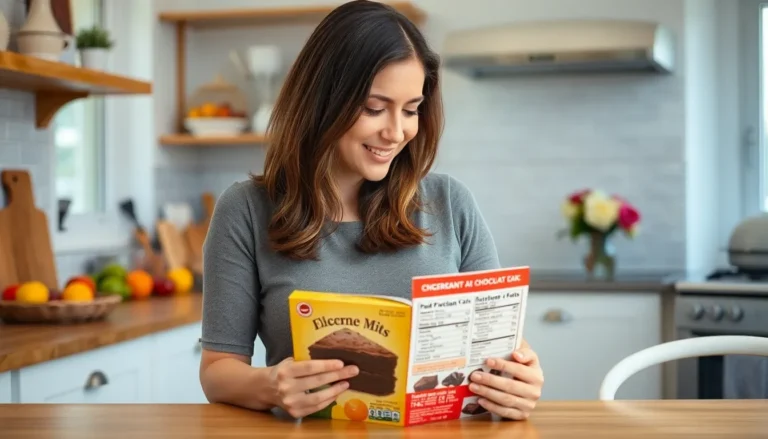Table of Contents
ToggleImagine stepping into a space that feels like it’s been plucked straight from a sci-fi movie. Futuristic interiors aren’t just about sleek lines and shiny surfaces; they’re about creating an experience that makes you feel like you’ve time-traveled to tomorrow. With the rise of technology and innovative design, these spaces blend functionality and aesthetics in ways that’ll make your current living room look like a relic from the past.
Overview Of Futuristic Interiors
Futuristic interiors feature designs that create a sensation of awe and innovation. These spaces incorporate smart technologies seamlessly, like automated lighting and temperature control systems. Creative layouts prioritize open spaces, allowing for flexible configurations that adapt to various needs.
Colors often include metallics, bold contrasts, and soft neutrals, enhancing the futuristic feel. Textures range from sleek glass surfaces to soft, flowing materials, providing a tactile contrast. Lighting plays a crucial role, often using LED fixtures that change color and intensity, creating dynamic atmospheres.
Furniture in these environments typically boasts minimalist yet artistic forms. Shapes are often geometric, moving away from traditional curves to embrace angular and asymmetrical designs. Sustainable materials, like recycled plastic and bamboo, frequently contribute to the eco-friendly aspects of these interiors.
Incorporating nature remains vital, as biophilic design elements bridge the gap between technology and the natural world. Vertical gardens or living walls promote greenery, enriching the overall ambiance. Art installations also enhance spaces, showcasing digital or interactive pieces that encourage viewer engagement.
People experience futuristic interiors as immersive worlds that invite exploration. They go beyond simple aesthetics, promoting a lifestyle that embraces innovation and functionality. Trends like virtual reality integration and augmented reality applications continue to expand the possibilities within these sophisticated spaces.
Key Elements Of Futuristic Interiors
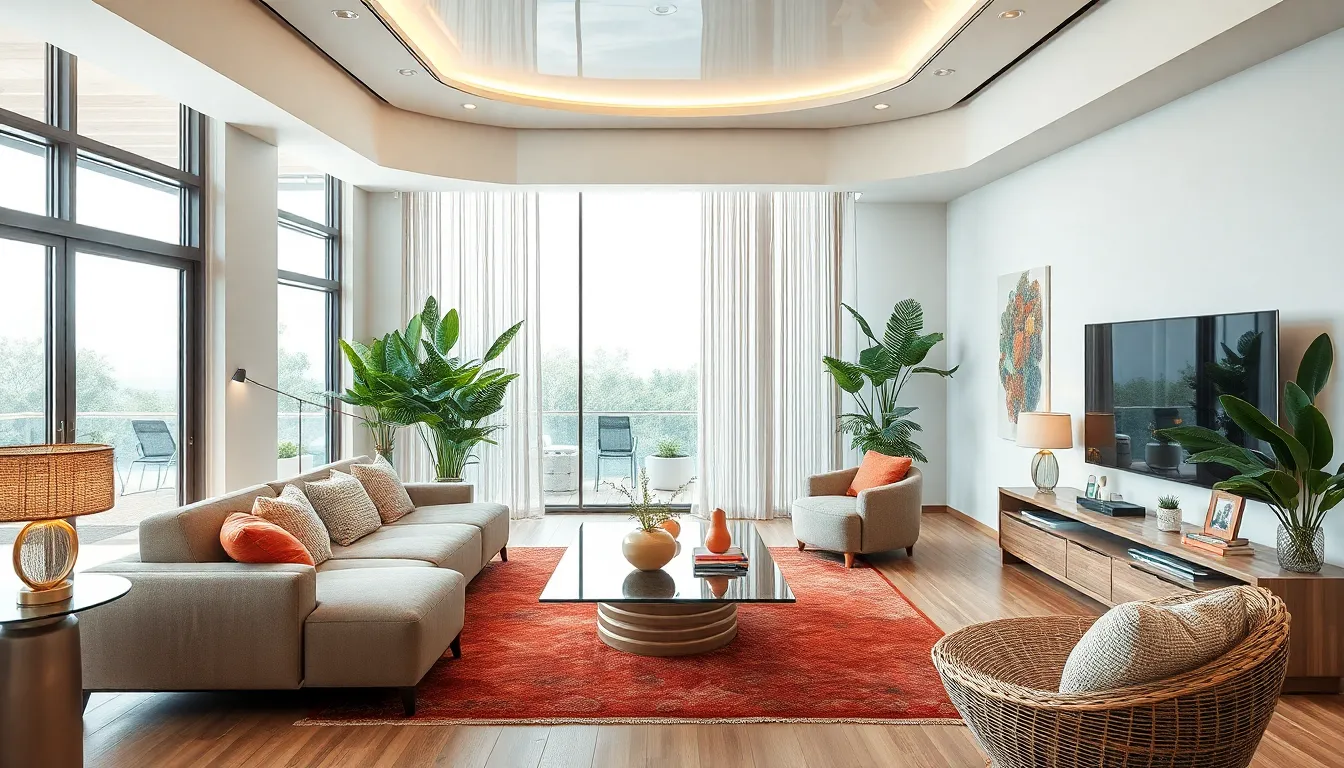
Futuristic interiors focus on innovation and functionality. These aspects drive the design principles, making spaces feel cutting-edge and immersive.
Innovative Materials
Sustainable materials define futuristic interiors. Recycled plastics and bamboo reduce environmental impact while enhancing aesthetics. Different textures contribute to visual appeal; think sleek glass surfaces and soft fabrics. Additionally, self-healing materials offer resilience and longevity, aligning with modern standards. Responding to the need for sustainability, these innovations not only attract the eco-conscious but also elevate design quality. 3D-printed elements create unique, custom pieces, pushing traditional manufacturing boundaries further. Smart textiles that change color or texture based on environmental cues add another layer of interactivity to the space.
Smart Technology Integration
Smart technology transforms everyday living in futuristic interiors. Automated systems for lighting and temperature create optimal comfort. Voice-activated controls streamline user interaction, making technology feel seamless and intuitive. Home automation integrates security, entertainment, and utilities into one cohesive platform, enhancing convenience. Additionally, smart appliances connect to networks, allowing users to monitor energy consumption in real-time. Augmented reality apps provide design visualizations, helping users make informed choices about their spaces. These technologies elevate functionality and create a harmonious blend of comfort and efficiency, redefining the living experience.
Design Trends In Futuristic Interiors
Futuristic interiors reflect innovative design trends that prioritize aesthetics and functionality. These spaces captivate through simplicity and a connection to nature.
Minimalism And Simplicity
Minimalist design takes center stage in futuristic interiors. Clean lines and uncluttered spaces create a sense of calm and order. Furniture exhibits geometric shapes, avoiding traditional curves to evoke a modern feel. Neutral color palettes pair well with bold metallic accents, enhancing visual contrast. A focus on function ensures that every piece serves a purpose, eliminating distractions. High-quality materials such as glass and steel contribute to a sleek ambiance. Clutter-free environments promote mindfulness, inviting occupants to engage with their surroundings.
Biophilic Design
Biophilic design connects indoor spaces to the natural world, enriching the living experience. Incorporating elements like vertical gardens and large windows invites light and greenery into homes. Natural textures, from wood to stone, enhance tactile interactions. Plants improve air quality while fostering emotional well-being, making them essential in futuristic interiors. When spaces emphasize harmony with nature, they create a tranquil atmosphere. Outdoor views inspire creativity, engaging occupants and stimulating relaxation. Integrating biophilic principles reflects a commitment to sustainability, merging aesthetics with ecological responsibility.
Color Palettes And Textures
Futuristic interiors adopt bold color palettes that ignite the imagination. Metallic hues often dominate, including silver, chrome, and gold, providing a sleek, reflective quality. Soft neutrals, such as beige and gray, balance the vibrancy, promoting a serene atmosphere. Rich jewel tones, like emerald and sapphire, introduce depth, creating focal points in open spaces.
Textures play a significant role in enhancing tactile experiences. Sleek glass surfaces complement smooth metals, adding sophistication to the overall aesthetic. Soft textiles, including plush fabrics and innovative synthetics, create inviting zones that contrast with hard materials. Natural elements, such as wood and stone, provide warmth, bridging the gap between technology and nature.
Innovative design incorporates layers of texture to evoke interest. An accent wall clad in 3D panels can transform a simple backdrop into an engaging feature. Moreover, the use of dynamic materials, like translucent acrylics, contributes to an ever-changing environment through light refraction.
Combining these colors and textures fosters a cohesive ambiance. Thoughtful integration of elements such as illuminated furniture can enhance the sense of modernity. Areas that blend organic shapes with geometric lines appeal to both the eye and the touch, forging connections between different styles.
Ultimately, using a diverse range of color palettes and textures enhances the immersive experience in futuristic interiors. Environments become more than just living spaces; they evolve into realms that invite exploration and inspire creativity.
Sustainability In Futuristic Interiors
Sustainability plays a crucial role in the development of futuristic interiors. Designers prioritize eco-friendly materials, such as recycled plastics and sustainably sourced bamboo, to minimize environmental impact. This approach not only enhances aesthetic appeal but also addresses growing awareness of climate change.
Utilizing smart technologies significantly reduces energy consumption. Automated systems for lighting and heating adapt to occupants’ needs, promoting efficiency and comfort. Energy-efficient appliances further contribute to sustainable living, aligning with modern values of responsibility.
Incorporating biophilic design elements enhances both sustainability and well-being. Vertical gardens provide natural beauty while improving air quality, creating tranquil environments. Large windows invite in natural light, establishing a connection to the outside world, which fosters a more uplifting atmosphere.
Employing adaptive reuse techniques sustains historical elements in new spaces. Transforming existing buildings with futuristic interiors preserves cultural stories while embracing innovation. This practice reflects a commitment to sustainability, merging past and future design philosophies.
Emphasizing minimalism also supports eco-conscious choices. By reducing clutter, individuals can minimize waste associated with excessive possessions. Clean designs not only create calm spaces but also advocate for thoughtful consumer habits, complementing the sustainable ethos.
Art instillations further enrich these eco-friendly environments. Digital pieces can transform spaces without physical resources, minimizing material consumption. Engaging viewers through interactive elements encourages mindfulness about sustainability.
These combined efforts create immersive, futuristic interiors focused on sustainability. By thoughtfully integrating technology, natural elements, and eco-friendly materials, designers craft spaces that reflect a holistic commitment to preserving the planet while inspiring positive change.
Futuristic interiors represent a bold leap into a world where design and technology converge. These spaces not only captivate with their innovative aesthetics but also enhance the overall living experience. By prioritizing sustainability and functionality, they create environments that resonate with the values of modern society.
As trends evolve, the integration of smart technologies and biophilic elements will continue to shape these interiors. They offer a glimpse into a future where every design choice reflects a commitment to both style and the well-being of the planet. Embracing futuristic interiors invites individuals to explore new ways of living that inspire creativity and foster a deeper connection with their surroundings.
